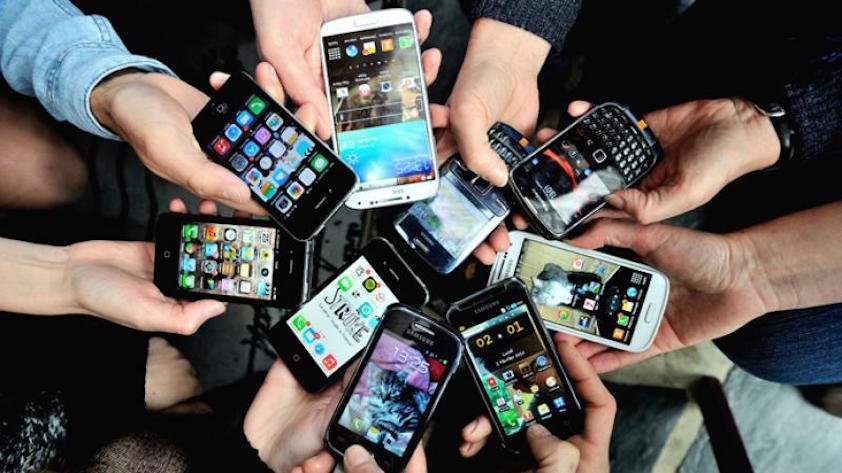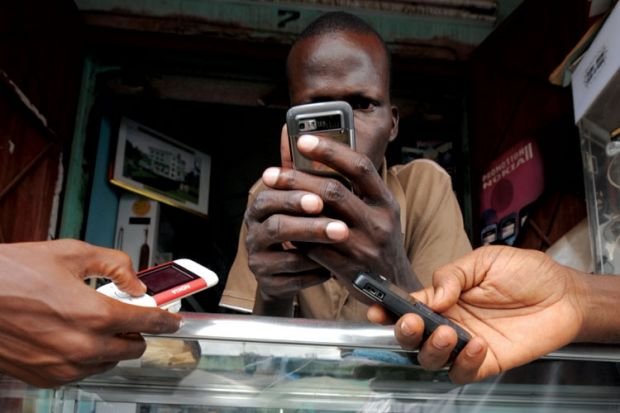In today’s fast-paced world, students rely on their phones for almost everything — from attending online classes and taking notes to staying connected with friends and managing daily schedules. But when your phone suddenly starts acting up in the middle of an assignment or lecture, panic usually follows. The good news is, not every issue needs a technician. Many of the Common Phone Problems students face — whether it’s a freezing screen, quick battery drain, or slow performance — can actually be fixed right at home.
This guide breaks down seven of the most Common Phone Problems and the simple, practical steps you can take to solve them yourself. With a little patience and the right know-how, you can save both time and money while keeping your device running smoothly for school and personal life.
Table of Contents

1. Screen Glitches and Unresponsive Touch
One of the most frequent Common Phone Problems students run into is a screen that flickers, freezes, or just refuses to respond. Picture this: you’re in a lecture hall, trying to take quick notes, but your screen doesn’t budge. Frustrating, right?
Many times, this issue is software-based. A rogue app, buggy update, or corrupted cache can lock up the touch interface. Students can often fix it themselves:
- Force-reboot the phone (hold power + volume buttons together) to reset unresponsive touch controls.
- Clear the cache or reboot into safe mode to remove the app causing trouble.
- Update or roll back recent system updates that might be unstable.
- If it’s a hardware issue (e.g., wear and tear or drops), inspect for cracks or separation between the glass and frame—if visible, the only real fix might be professional repair.
Even though this is one of the more frustrating Common Phone Problems to face, these steps solve it in many cases.
2. Battery Draining Too Fast
A dying battery halfway through your study session? That’s another of the Common Phone Problems students complain about. Your phone should last a full day under normal usage, but when it doesn’t, here’s what to do:
- Check battery usage stats in settings to spot apps hogging battery.
- Turn off background app refresh, Bluetooth, GPS, or Wi-Fi scanning when not in use.
- Lower screen brightness or use auto-brightness.
- Use battery saver / low-power modes—they really do help extend charge.
- If battery health is degraded beyond, say, 80% capacity, consider replacing the battery (if your phone supports it).
Even though battery ageing is inevitable, most battery-drain problems are due to misconfigured settings or power-hungry apps—not hardware failure—another of the everyday Common Phone Problems you can handle.
3. Slow Performance or Lag
Nothing kills productivity like a sluggish phone. Every swipe, open or transition drag, it’s one of the more irritating Common Phone Problems students face:
- Free up storage: full or near-full memory can slow everything down.
- Uninstall unused apps—especially heavy ones.
- Disable animations in developer settings.
- Clear app cache or data for misbehaving apps.
- Close background apps or enforce limits on background activity.
- Occasionally, a factory reset (after backup) might restore performance.
Because demands on phones (for multitasking, videos, apps) are heavier now, slowdowns are frequent. But most times, simple cleanups can resolve this Common Phone Problem.

4. Wi-Fi, Mobile Data, and Connectivity Woes
Connectivity issues are a persistent group among Common Phone Problems. Whether it’s Wi-Fi that won’t connect, mobile data that stays off, or paired devices failing, you don’t always need a technician’s help. Students can fix it themselves:
- Toggle Aeroplane Mode on and off to reset radios.
- Forget and reconnect to Wi-Fi networks (re-enter password).
- Reset network settings (this clears all saved networks and Bluetooth pairings).
- Reinsert the SIM card (power off phone, remove SIM, reinsert, power on).
- Update carrier settings or system software.
Connectivity is critical for remote classes, research, and messaging. Because it is such a common stumbling block, this issue ranks high among the Common Phone Problems students must know how to tackle.
5. Apps Crash Constantly
Imagine you’re midway through submitting an assignment or sending an email—and the app just crashes. Frustrating, and another one of those Common Phone Problems students encounter:
- Update the app from the store.
- Clear its cache/data in settings.
- Reinstall the app if needed.
- Check for software incompatibility (some older phones can’t run newer app versions well).
- Free up system resources (RAM, storage) so apps have room to operate.
Often, crashes are due to corrupted files or conflicts. Students can resolve most such situations themselves without needing a repair shop.
6. Overheating When Using Aggressive Tasks
It’s alarming when your phone becomes too hot to hold. Overheating is yet another of the Common Phone Problems that can hamper productivity and even damage internal components:
- Remove heavy phone cases (they hamper heat dissipation).
- Avoid using your phone in direct sunlight or hot environments.
- Shut down resource-intensive apps like games, video editors, or navigation when not in use.
- Turn off GPS, Bluetooth, or connected devices if active.
- If overheating is persistent—especially while charging—consider checking the charging cable or adapter as a culprit.
When you know what causes the heat, you can manage it. Most overheating episodes are preventable and solvable by students themselves.
7. Storage “Full” Alerts and File Clutter
Finally, running out of storage is among the Common Phone Problems that affect many students who take photos, record lectures, or save large PDF files. A full phone means new apps won’t install, OS updates stall, and performance degrades.
- Use cloud storage (Google Drive, iCloud, Dropbox) to offload files.
- Move media files to the SD card (if supported) or to a PC.
- Regularly delete duplicate or unneeded files.
- Use cleaner utilities (built-in cleaners or trusted third-party apps) to locate large files.
- Clear app data or uninstall apps you no longer use.
If you keep an eye out and clean regularly, the last item on our list of Common Phone Problems can be prevented entirely.

Conclusion
Smartphones are essential tools for learning, communication, and productivity. But when they misbehave, frustration sets in—especially for busy students juggling schedules, assignments, and deadlines. The good news: the seven issues above are among the Common Phone Problems you can often fix yourself without needing a technician.
From screen glitches to storage overload, most problems root in software, settings, or misuse. By following the tips above—force rebooting, clearing caches, uninstalling misbehaving apps, managing battery and storage wisely—you’ll save both time and money.
When, however, a weak screen, physical damage, or component failure is at fault, seek professional help. But for those times you can “DIY,” you’ll already have the steps needed to get your device functioning properly again. Don’t let minor hiccups derail your studies—master these Common Phone Problems and be more self-reliant.
Join Our Social Media Channels:
WhatsApp: NaijaEyes
Facebook: NaijaEyes
Twitter: NaijaEyes
Instagram: NaijaEyes
TikTok: NaijaEyes




